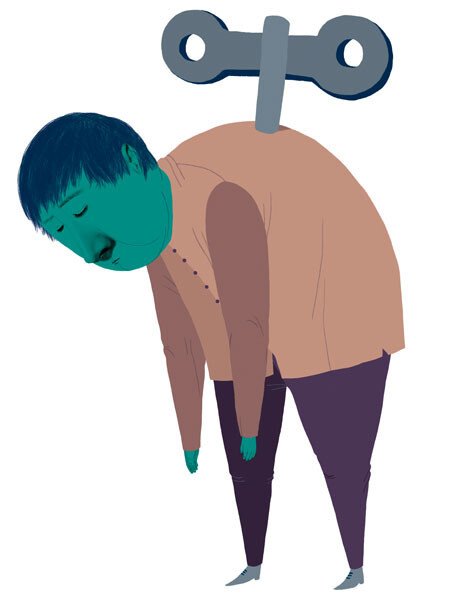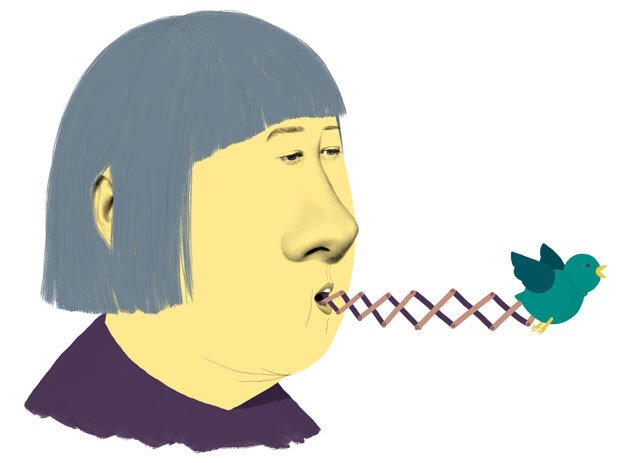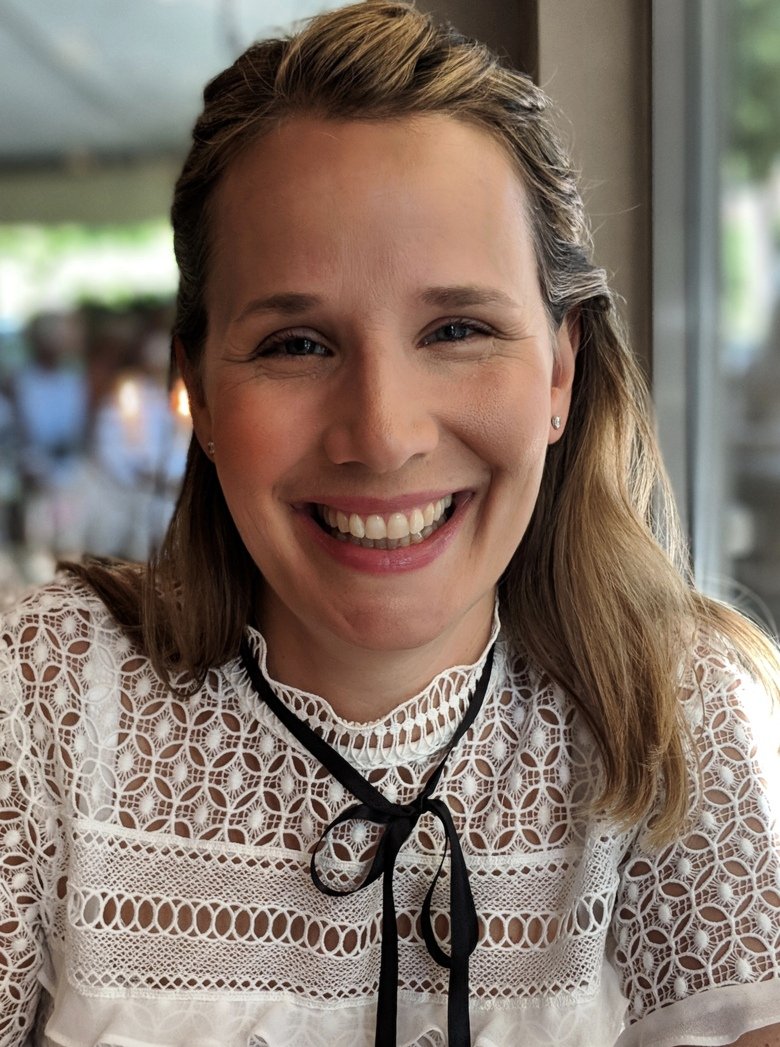Curious about circadian rhythm
Our body clock controls us more than we realise. If the discovery that was awarded the Nobel Prize in 2017 has a wider breakthrough, it can change everything from when the school day will start to what medicines we take and when.

Text: Fredrik Hedlund, first published in Swedish in the magazine Medicinsk Vetenskap No 4/2017
People, animals, plants and even some bacteria and single-cell organisms all have an internal clock. A 24-hour system that regulates functions in the cells so that they take place at the right time for the organism. Researchers call this the circadian rhythm after the Latin circa diem – “around one day”.
“It’s an adaptation to the surroundings. We have the Earth’s rotation that creates light and dark cycles and the circadian rhythm has been developed to make it possible for the organisms to predict and adapt to these cycles,” says Anita Göndör, researcher at the Department of Oncology-Pathology at Karolinska Institutet.
Consequences of the circadian rhythm are, for example, that parts of the immune system are extra active late at night and very early in the morning, while blood pressure, pulse and body temperature are the highest during the day. Lung function is the best in the afternoon and worst 12 hours later, just before dawn. The stress hormone cortisol begins increasing around 20-30 minutes before one wakes up and is then high until around 11 p.m. when it falls, while growth hormone is instead mostly secreted at night.

The circadian rhythm could be shown as early as the first half of the 18th century when the French scientist Jean-Jacques d’Ortous de Mairan demonstrated it in the mimosa plant that continued to open its leaves in the morning despite being placed in the dark. Nearly 250 years later, in the early 1970s, a gene was found that controls the circadian rhythm by Seymour Benzer and Ronald J. Konopka.
Just over two decades later, the recipients of this year’s Nobel Prize in physiology or medicine, Jeffrey C. Hall, Michael Rosbash and Michael W. Young, were able to show how the body clock worked in purely molecular terms. It involves a negative feedback mechanism where the protein that is made by the gene slows its own production when it reaches an adequate concentration. Since the mid-1990s, many new discoveries have been made and new knowledge is growing all the time, but the research field is very young compared with many others.
Anita Göndör and her research team have studied the circadian rhythm since 2014 and she sees many challenges ahead.
“There is a lot that we don’t know. For example, we don’t entirely understand the principles that produce the period length of 24 hours. There’s also a lot more to discover about how cellular processes, such as metabolism and mechanical signalling, collaborate with the circadian clock to create stable daily rhythms,” she says.
However, it is clear that there is a central clock in the brain – the suprachiasmatic nucleus. This structure takes in information about light and dark from the eyes and adjusts the entire system. It is the central clock that resets the system when one changes time zones travelling across the Atlantic, for example. But exactly how it controls and communicates with the other cells of the body, which have their own clock functions, is not clear.

Different people also have different preferences in terms of the circadian rhythm. Some are larks who wake up early and are then tired in the evening while others are night owls who are more energetic in the evening and more tired in the morning. The researchers say that they belong to different chronotypes.
Many researchers are looking for the genetic explanations behind the chronotypes, at the same time that it is also known that the preferences for going to bed and getting up early are not necessarily constant through life. For example, it is clearly shown that young people generally have a delayed circadian rhythm and go to bed later at night and are more tired in the morning, something that disappears when they get older.
The modern human’s possibility to be able to be up later at night thanks to electric lighting is, however, something that researchers are now increasingly beginning to understand can lead to problems.
It has been shown in human studies that a delayed daily rhythm can lead to changes in glucose tolerance, insulin sensitivity and appetite control, which by extension can lead to obesity and diabetes. An elevated risk of cancer, depression and other psychiatric disorders, as well as cardiovascular disease in people with a delayed daily rhythm, due for example to shift work, have also been seen.
“Electric lighting has an extensive effect on our circadian system,” says Anita Göndör.
So there are extensive indications that the possibility of postponing the natural day/night cycle with electric lights is harmful to us and something that should be avoided. But the question is whether it is practically possible, or even desirable, to turn the clock back to the time before the light bulb in our modern societies.

“I don’t know if I would want to go to bed when the sun goes down. What would happen in Sweden in the winter if everyone went to bed at three in the afternoon? Production as a whole would grind to a halt. Of course, that’s unrealistic,” says Barbara Canlon, Professor at the Department of Physiology and Pharmacology at Karolinska Institutet.
Instead, she believes that our modern lifestyle is in all likelihood here to stay, as well as its consequences.
“A delay of the circadian rhythm causes long-term stress that in turn causes other problems, so directly and indirectly this leads to a number of health problems. But we simply have to learn to live with them,” she says.
At the same time, she believes that some things in society could be improved without having such extensive effects on the social structure. Such as adapting the school days to adolescents’ delayed circadian rhythm, which generally makes them too tired at 8:30 a.m. when school begins.
“School could begin at 9:30 a.m. instead,” she says.
At the same time, a lot is still unknown regarding how sensitive different people are to shifts in the body clock. There is an interesting hypothesis that is based on growing research indicating that the amount of daylight during the period one is born in and has one’s early development has a long-term effect on the stability of the circadian rhythm. The hypothesis is based on those who are born in the summer with a long day and short night having an easier time to adapt to seasonal shifts, shift work and jet lag compared with those born in the winter with a short day and a long night.
“There are a lot of mice and rat studies about this. When it comes to humans, larger studies are needed, but there are trends that show that some diseases can be affected by both the season and the latitude at birth, since it determines the length of the day,” says Anita Göndör.
An entirely different aspect of the circadian rhythm is the fact that if the body’s cells change their function over the time of day, there can be different times that are differently suited to take medications at. This area of research is called chronopharmacology and is also relatively new. However, it is already being successfully applied within cancer care to optimize the attacks on the cancer cells when they are multiplying the most.
Cell division can vary over the hours of the day and is thereby used to distinguish health and cancer cells at different points in time. This way, the treatment can provide both a better effect and fewer side-effects. In the same way, chronopharmacology is used in rheumatology where one can administer anti-inflammatory cortisone at night when the inflammatory process is most active.

Barbara Canlon has conducted research on the ear and hearing damage throughout her entire research career. More or less randomly, she began, together with her colleague Gabriella Lundkvist, to look for a possible circadian rhythm in the ears of mice.
“And we found a clear rhythm. The activity increased at night and decreased during the day since mice are nocturnal animals. Until then, nobody had even asked the question I there was a daily variation in the ear,” she says.
The researchers were then able to show that the mice’s ears are more sensitive to sound trauma during their active period at night than what they were during the day. Translated to humans, it should be the opposite, was the researchers’ continued reasoning.
“The active phase for humans is the day and the resting period is in the evening/night so our ears should be more sensitive during the day,” says Barbara Canlon.
This would mean that it is more harmful to subject the ears to strong noise, like a rock concert, during the day than in the evening.
She also feels that the new findings about the ear’s circadian rhythm must have the consequence that one begins to also weigh in thoughts of chronophramacology in the treatment of hearing damage.
The treatment is made with steroids that interact with the body’s hormones, which in turn vary over time. Barbara Canlon says that one must then know if one wants to provide the treatment when the body’s own hormones are high or low.
“Steroids are related to cortisol, which binds to the glucocorticoid receptor, and this entire process is time regulated. It will work more or less well depending on when the treatment is provided,” she says.
With this new approach, she believes that there is a possibility to streamline the pharmaceutical treatment for the hearing impaired patients.

Streamlining the pharmaceutical treatment is also the objective of Andrea Carmine Belin, Docent at the Department of Neuroscience at Karolinska Institutet. She conducts research on cluster headache, a somewhat uncommon and severe headache with an unknown cause that strikes around one in one thousand people. The disease is more common in men than women and usually arises at between 20 and 40 years of age and often subsides after 65. So it is a disease that is very clearly tied to being of a working age and also has clear ties to the circadian rhythm.
“A majority of the patients, around two thirds, say that they have their attacks at the same time every day. The attacks are most often between 2 and 4 a.m. at night and least common at midday. Patients have reported that if they travel west, to North America, the attack is shifted to the same time, local time,” she says.
Andrea Carmine Belin and her research team have now found a strong connection to a genetic variant in the CLOCK gene that affects the length of sleep.
“The people who have this genetic variant have a much higher activity of the CLOCK gene. So it is something that is happening at a daily rhythm level,” she says.
Cluster headache is occasionally called suicide headache since the pain is so intense. Andrea Carmine Belin explains about a recent survey where 1,500 cluster headache patients were asked to rate the perceived pain on a 10-degree scale. A migraine was rated at 5.4, a bullet wound at 6.3, childbirth was perceived at 7.3 and a cluster headache was estimated at 9.7 on the 10-degree scale.
Most have an episodic variant of the disease where periods of headache attacks can last from weeks to months interspersed with entirely symptom-free periods that can last for months up to several years. Around one in ten has a chronic variant that lacks symptom-free periods longer than one month a year.
Treatment does exist. Migraine medicine helps some; lithium, which is normally used for bipolar disorder, has a preventive effect mainly for chronic sufferers and in some cases, it can work to provide acute treatment with oxygen, but the effect of the pharmaceutical treatment is often inadequate. Something that Andrea Carmine Belin believes may be due to the knowledge of the various variants of the disease being incomplete and that the effects of medication can vary across the day.
“The disease is now divided into episodic and chronic cluster headache. But I believe that there are even more subtypes, such as those who have daily rhythm-regulated attacks,” she says.
Andrea Carmine Belin is now trying to find patterns to more easily be able to recognise the patients who really benefit from various treatments and when during the day they should be taken for the best effect.
Anita Göndör and her research team have instead studied how the Nobel Prize winners’ model works in the cell nucleus. They have been able to show how two proteins control the activity of circadian genes by transporting them from an active state in the centre of the cell nucleus to an inactive state on the edge of the cell nucleus. This information is another piece of the puzzle for understanding how the circadian system works.
In connection with this finding, she is now investigating if cancer cells can hijack the circadian system to more easily adapt to changes in their surroundings. Something that could be used to develop future treatments against cancer.
In one future, Anita Göndör sees how one investigated the body clock of cancer patients to determine both what treatment should be given and when.
She also believes that the body clock will become just as natural in future studies as it is today to distinguish between effects in men and women, young and old.
“It will simply be impossible to do studies without taking the circadian system into consideration. This vision of the future is not as far off as one might think. Since the idea and awareness of this has been evoked in connection with this year’s Nobel Prize, I am very optimistic about the future,” says Anita Göndör.
